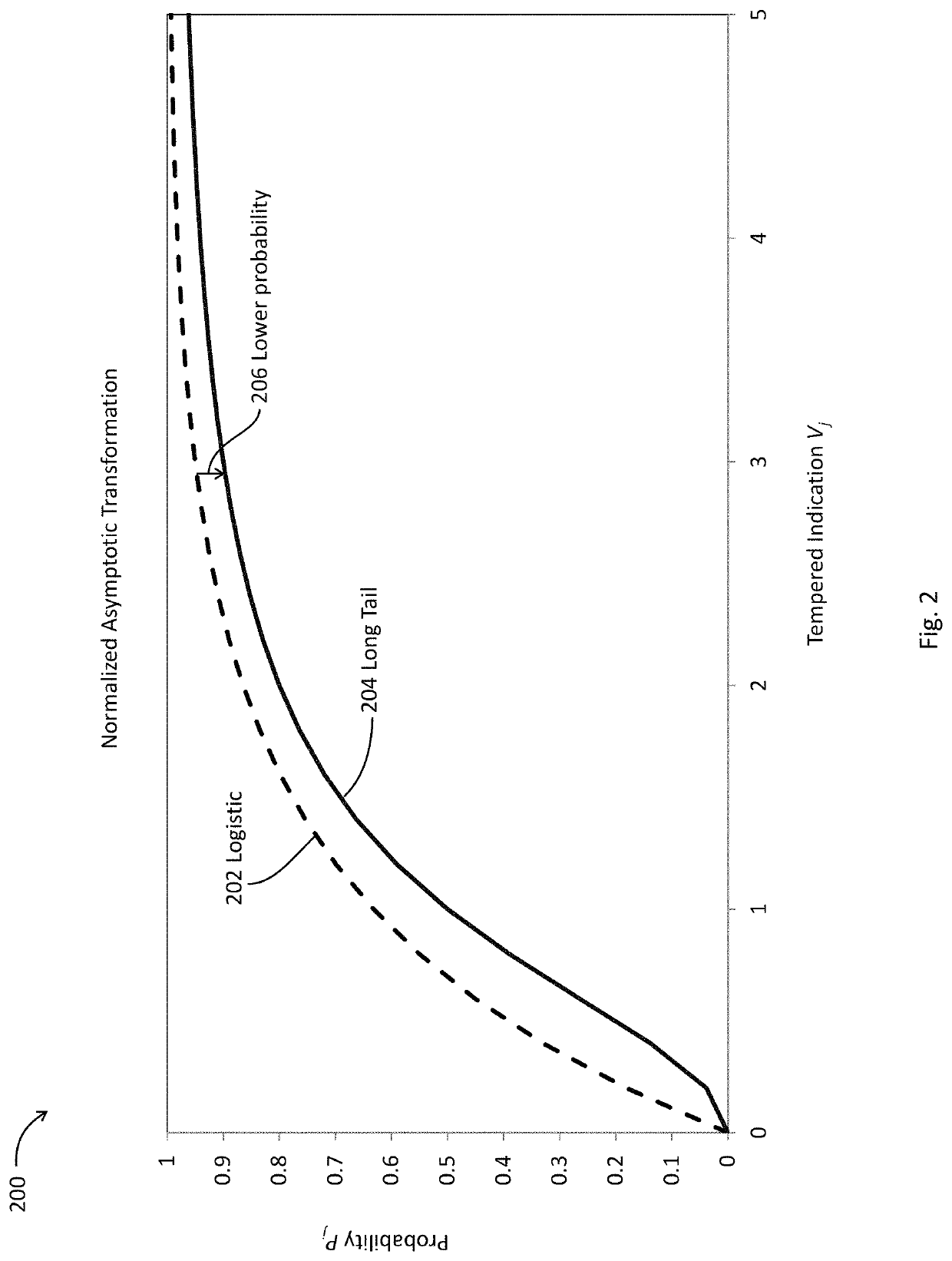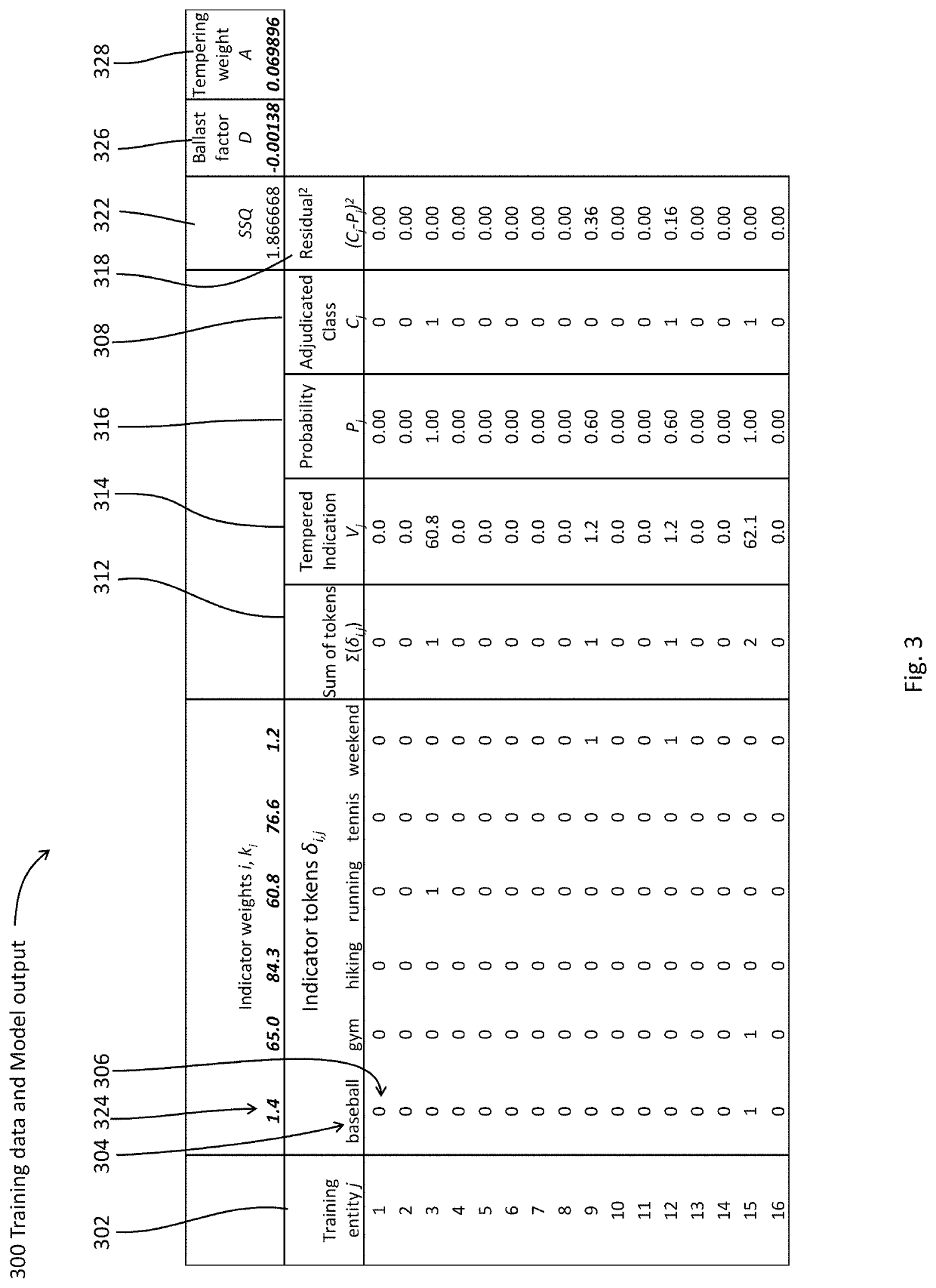Artificial intelligence system for training a classifier
- Summary
- Abstract
- Description
- Claims
- Application Information
AI Technical Summary
Benefits of technology
Problems solved by technology
Method used
Image
Examples
example i
[0036]One of the practical applications of the system for training a classifier is fraud detection in insurance claims. An example of an insurance claim is a workers' compensation insurance claim. Each insurance claim has a claimant. An example of a class for a workers' compensation insurance claim is whether or not the claim is fraudulent.
[0037]A set of 100 workers' compensation claimants and associated insurance claims (i.e. training entities j) were adjudicated to determine which claims were legitimate and which claims were fraudulent. The social media sites of the claimants were then analyzed to identify the presence or absence of six words indicative of whether or not said claims were fraudulent. These six words are the indicators i. The class of each training entity j was associated with an event date. The event date was the date a workplace accident occurred that lead to the claimant's insurance claim. The dates of the publications used for each training entity j were after e...
example ii
[0040]FIG. 5 illustrates a computer implemented classifier system 500 used to determine if new insurance claims h (item 501) are fraudulent 503 or are not fraudulent 505. Weights and parameters 124 calculated by the modeling engine 120 are transferred to the classifier system. The classifier system reads in 504 a set of indicator tokens {δi,j} related to a given new claim 507. The classifier system then calculates a tempered indication of fraud Vh using a tempered model 502. The tempered model comprises the weights and parameters produced by the modeling engine.
[0041]The classifier system then calculates a probability of fraud Ph using the tempered indication and the asymptotic transformation 510.
[0042]The classifier system then compares 520 the calculated probability of fraud Ph with a threshold probability of fraud Po. If the calculated probability of fraud is greater than or equal to the threshold probability, then the claim is flagged 533 for further adjudication. If the calcula...
PUM
 Login to View More
Login to View More Abstract
Description
Claims
Application Information
 Login to View More
Login to View More - R&D
- Intellectual Property
- Life Sciences
- Materials
- Tech Scout
- Unparalleled Data Quality
- Higher Quality Content
- 60% Fewer Hallucinations
Browse by: Latest US Patents, China's latest patents, Technical Efficacy Thesaurus, Application Domain, Technology Topic, Popular Technical Reports.
© 2025 PatSnap. All rights reserved.Legal|Privacy policy|Modern Slavery Act Transparency Statement|Sitemap|About US| Contact US: help@patsnap.com



